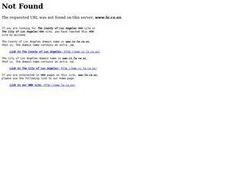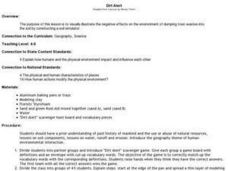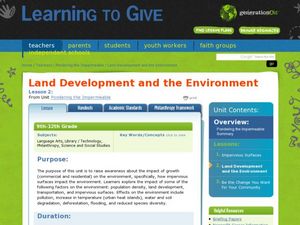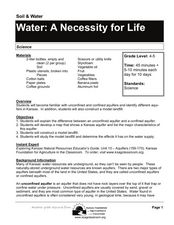Curated OER
Soil Layers
Ninth graders identify the different layers of soil. In this earth science instructional activity, 9th graders explain how limestone layers are formed. They identify the different parts of the coral colony.
Curated OER
Happy Lesson: The Earth's Crust
This PowerPoint provides a multiple choice and fill-in-the-blank format for reviewing vocabulary and related content following an "earth's crust" science unit. The information is concise and age-appropriate and the font and colors are...
Curated OER
Shoe Box Archaeology
Students assemble a shoe box following a layered pattern alternating between soil and artifacts. The layers of artifacts begin with the grandparents and end with the student's own personal possessions.
Curated OER
Shoe Box Archaeology
Learners make a box layered with information about grandparents, parents, and themselves. They dig up each other boxes and try to decipher the personality or lifestyle of the person whose box it is.
Curated OER
Dirt Alert
Students explore the environment and effects of pollution. They participate in a "Dirt Alert" scavenger game to study vocabulary words. Students construct a soil simulator to visually illustrate the negative effects on the environment of...
Curated OER
Land Development and the Environment
Students examine the relationship between land development and the environment. In this environmental stewardship lesson, students explore how population density, land development, transportation, and impervious surfaces take their toll...
Curated OER
Water: A Necessity for Life
Young scholars examine types of aquifers and make a model landfill. For this water usage lesson, students determine the difference between confined and unconfined aquifers. They build a model landfill, observe it for two weeks, and...
Curated OER
Archaeology Lesson Plans
Archaeology lesson plans can give students hands on ways to explore the study of ancient cultures.
Curated OER
Chronology: They Time of My Life
Middle schoolers demonstrate the importance of intact information to achieve accuracy. They compare and constrast their timelines with the chronological information contained in a stratified archaeological site.
Curated OER
Relative Dating in Archaeology
Students create a timeline that explains how ancient cultures used artifacts. In this Relative Dating in Archaeology lesson, students examine artifacts and draw conclusions about their origins. Then students analyze antiquated objects or...
Curated OER
Garbage Can Archaeology
Pupils explore the use of stratigraphy to date objects by sorting the material in the wastebasket. They make a list of actual items from the garbage can and their possible uses and categorize the artifacts.
T
Curated OER
What does AG have to do with me?
Young scholars practice alphabetizing while categorizing sources of basic agricultural products. They discuss agricultrual products, discover where they are grown and draw a simple agricultural scene on poster board.











